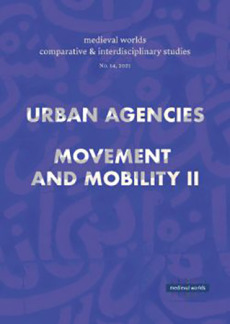medieval worlds ‒ comparative and interdisciplinary studies, No. 14/2022
Urban Agencies: Reframing Anatolian and Caucasian Cities (13th‒14th Centuries) and Movement and Mobility in the Medieval Mediterranean: Changing Perspectives from Late Antiquity to the Long-Twelfth Century, II
Herausgegeben von Bruno de Nicola, Herausgegeben von Andre Gingrich, Herausgegeben von Matthew Kinloch, Herausgegeben von Walter Pohl
Reihe: medieval worldsVolume 14 presents, in the individual articles section, two contributions to ancient and early medieval verse riddles in different languages offering at the same time insights into the relationship between humans and plants (A. Hall and S. A. Meghani).
Guest editors B. De Nicola and M. Kinloch put the spotlight on cities in the first collection of articles, “Urban Agencies: Reframing Anatolian and Caucasian Cities (13th-14th Centuries)”. An introductory methodological summary by M. Kinloch and seven contributions – four using textual sources (A. C. S. Peacock, T. Shawcross, İ. Selçuk and D. Korobeinikov), two relying on archaeological evidence (O. Pancaroğlu and B. De Nicola) and one using both (N. S. M. Matheou) – investigate urban centres and their negotiations of power and autonomy in 13th- and 14th-century Caucasus, Anatolia and the Aegean.
The Mediterranean in general and the “Movement and Mobility” of people and objects in it are explored in additional studies to the strand of volume 13, “Movement and Mobility in the Medieval Mediterranean: Changing Perspectives from Late Antiquity to the Long-Twelfth Century” by guest editors C. Heath, C. Gantner and E. Manarini: A. Jugănaru deals with the interest male spiritual leaders took in female pilgrimages in late Antiquity, L. M. Bondioli provides insights into the relationship between state and merchants in the Islamic Mediterranean of the 11th century, based on Geniza commercial letters and legal queries, and F. de Falco presents the Mediterranean, and Jerusalem in particular, as seen from the distanced perspective of Henry II’s court.

